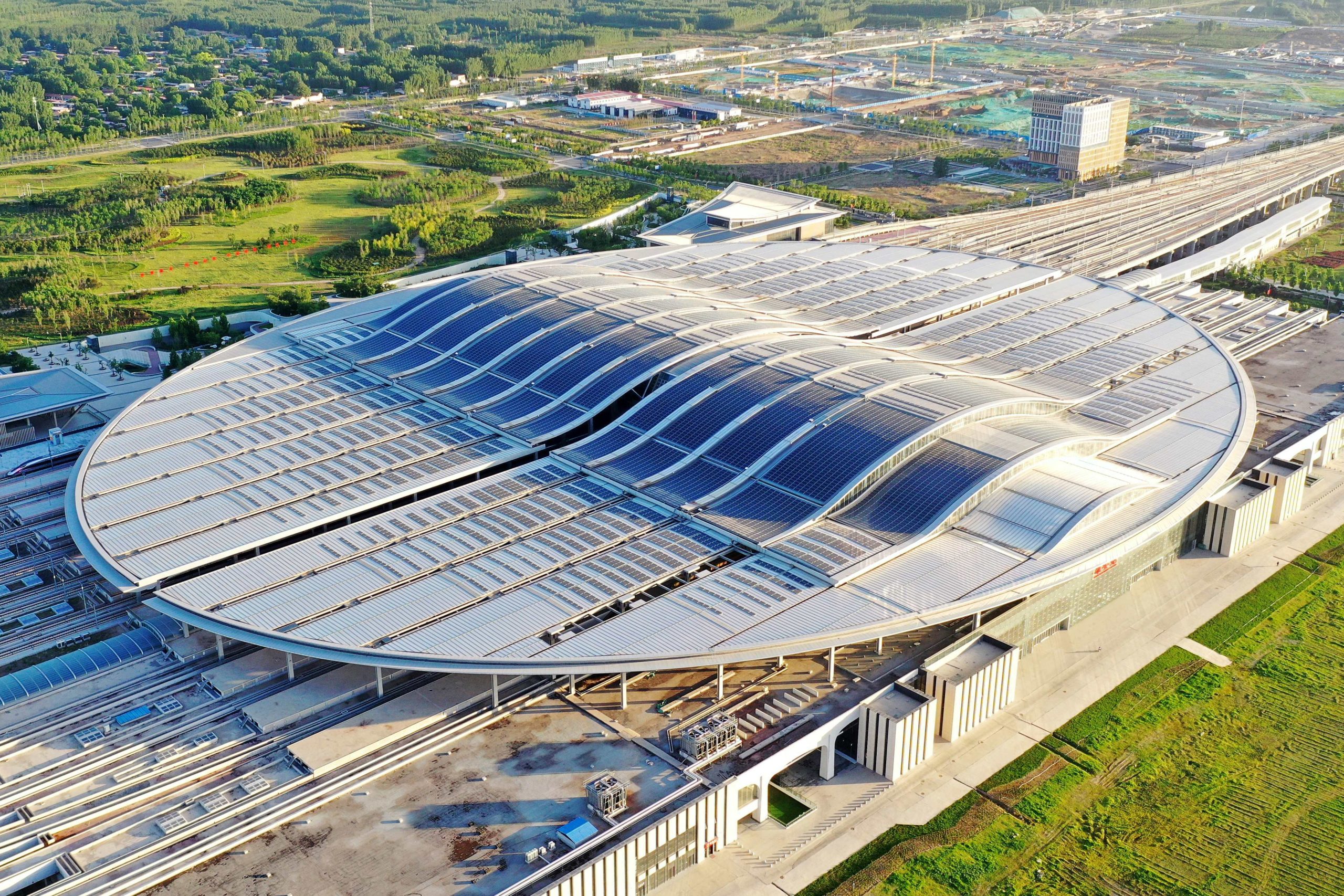

What is BIPV? More Than Just Stuck-On Solar Panels!


I.What is BIPV?
BIPV, short for Building Integrated Photovoltaic, refers to the technology of integrating solar power generation products into buildings, transforming structures from pure energy consumers into complexes that both consume and produce energy. Unlike traditional photovoltaic systems attached to buildings (BAPV: Building Attached PV), BIPV emphasizes the organic integration of PV modules with architecture, making the PV system a part of the building structure and serving both power generation and building envelope functions. BIPV is not just a technical innovation but a revolution in architectural philosophy, breaking the traditional boundary between energy systems and architectural design to support green buildings and zero-carbon cities.
The conceptual prototype of BIPV can be traced back to the mid-20th century when photovoltaic power generation was first applied in aerospace—think of the PV structures on satellites and the International Space Station, early attempts at PV-structure integration. In 1967, Japan’s MSK Company first proposed the concept of building-integrated photovoltaic products, processing transparent front and back panels into semi-flexible, lightweight PV modules for pasting on roofs and walls, launching commercial exploration of BIPV technology. However, at this stage, due to immature technology and high costs, BIPV remained in small-scale trials and concept validation, failing to spread widely in construction.
From the late 20th to early 21st century, advancements in PV technology—including efficiency improvements in crystalline silicon cells and the development of thin-film cell technology—provided technical support for BIPV. In 2004, Sharp opened factories in the U.S. and Europe to produce PV modules, installing solar panels on the curtain walls of skyscrapers in Manchester, UK, using printed thin-film cell technology for BIPV products. This promoted BIPV applications in large construction projects. Meanwhile, governments worldwide began prioritizing renewable energy in construction, introducing policies like subsidies and building energy efficiency standards to expand the BIPV market.
In recent years, BIPV technology has matured, with a rich variety of products—including PV roofs, curtain walls, daylighting roofs, and sunshades—widely used in various buildings. In 2009, the spiral-shaped BIPV roof of Kaohsiung World Games Main Stadium in Taiwan was completed, with a total installed capacity of 1MW and a roof area of 21,000 square meters, demonstrating BIPV’s potential in large public buildings. By the end of 2013, the BIPV demonstration project at Baoding Yingli’s Diangu Jinjiang Hotel was completed, with 1.5MW of BIPV products installed on the roof, exterior walls, and windows, making it China’s largest BIPV demonstration project at the time. With cost reductions, performance improvements, and growing market awareness, BIPV has entered a phase of rapid development, becoming a key direction in building energy efficiency and renewable energy utilization.
II.BIPV vs BAPV
Structural and Functional Integration
BIPV: PV modules serve as building materials, directly participating in construction (e.g., PV roof tiles, curtain wall glass). They meet power generation needs while undertaking functions like waterproofing, heat insulation, and enclosure, deeply integrating with the building from the design phase.
BAPV: PV systems are additionally installed on existing buildings, usually using idle spaces (roofs, walls) fixed via brackets. The PV system remains independent of the building’s structure and functions, causing minimal changes to the original appearance.
Aesthetics and Architectural Integrity
BIPV: Customizes PV modules’ color, shape, and light transmittance to blend with the building’s style, enhancing aesthetics and technological appeal for a perfect unity of architectural beauty and energy function.
BAPV: May affect the building’s appearance, especially in large-scale installations; improper design can disrupt the original aesthetic.
Technical Difficulty and Cost
BIPV: Higher technical difficulty in design, construction, and maintenance due to dual requirements of architecture and PV, with stricter standards for material performance, waterproofing, and electrical safety. Initial investment is higher, but long-term comprehensive costs are competitive due to energy efficiency and increased building value.
BAPV: Mature technology, simple installation, with costs focused on the PV system itself. Initial investment is lower, but energy efficiency and building performance improvements lag behind BIPV.
III. BIPV Application Scenarios
(1) PV Roofs
(i) Flat Roof PV Systems
Flat roofs offer advantages for power generation: they allow PV modules to be installed at the optimal angle for maximum power output, use standard modules with stable performance, and do not conflict with other building functions. Cost-wise, large-scale installation of standard modules and simple construction keep PV power costs low.
Widely used in industrial plants, large commercial buildings, and some residential flat roofs. For example, many industrial park plants lay PV modules大面积 (on a large scale) to form distributed PV power stations, meeting self-consumption needs and feeding excess power into the grid.
(ii)Sloped Roof PV Systems
South-facing sloped roofs are economically viable for PV: they install modules at or near the optimal angle for high power generation, use standard modules, and their structure facilitates installation and drainage, matching the building’s waterproofing functions. Compared to other orientations, south-facing roofs receive longer and stronger sunlight, with higher efficiency and lower costs.
Common in villas, multi-story residences, and commercial buildings with distinctive architectural styles. In eco-residential communities, sloped roof PV systems supply power while blending with the building’s aesthetics, enhancing its appeal.
(2) PV Curtain Walls
PV curtain walls must meet all curtain wall functions besides power generation:
External maintenance: Windproof, waterproof, and heat-insulating to protect the interior.
Transparency: Select modules with different light transmittance to balance daylighting and power generation.
Mechanical performance: Withstand wind pressure, self-weight, and other external forces.
Aesthetics: Customize color and shape to coordinate with the building’s appearance.
Safety: Ensure reliable operation in various environments.
However, high-performance requirements drive up module costs, and PV performance may be lower due to building orientation and installation angles. Construction must align with the building’s design and progress.
Mainly applied in high-rise commercial buildings and office towers in cities. For instance, modern commercial complexes use PV curtain walls to provide clean energy and create iconic architectural appearances.
(3) PV Sunshades
PV sunshade systems integrate power generation with shading:
Shading: Adjust sunshade panels automatically or manually based on sunlight angle and intensity to block direct sunlight, reduce indoor temperature, and cut cooling energy consumption.
Power generation: PV modules on sunshades convert solar energy to electricity for recycling.
These systems offer flexibility and adjustability, optimizing for different needs and environments while decorating the building.
Suitable for windows, balconies, and porches in various buildings. In hotels, PV sunshades on windows create comfortable environments and generate power for operations.
IV.Advantages of BIPV
(1) Green Environmental Energy
BIPV systems harness solar energy—an inexhaustible clean resource—without emitting greenhouse gases (CO₂, SO₂) or pollutants (nitrogen oxides, dust), reducing reliance on fossil fuels and mitigating climate change. By generating electricity on-site, buildings meet part or all of their power needs, cutting indirect carbon emissions from grid electricity. For large buildings, this emission reduction is significant, contributing to low-carbon and sustainable development in construction.
(2) No Extra Land Occupation
BIPV systems install on roofs, walls, and sunshades—parts of the building—without occupying precious land, a crucial advantage in cities where land is scarce and expensive. For example, PV curtain walls and roofs on skyscrapers utilize vertical and horizontal space for efficient solar power generation. With dense urban buildings and high power demand, distributed BIPV networks supply power locally, reducing transmission losses, improving energy efficiency, and easing grid pressure.
(3) Building Energy Saving
PV modules absorb solar radiation to generate electricity, reducing surface temperatures of building envelopes and heat transfer into the interior. This lowers air conditioning loads and cooling energy consumption. In winter, module absorption raises envelope temperatures, cutting heating energy consumption. Additionally, BIPV-generated power prioritizes internal use, reducing grid purchases and total building energy consumption.
BIPV enables buildings to achieve energy self-sufficiency: excess power during sunny days can be stored or sold. This enhances energy independence and reliability, especially for remote areas or buildings requiring stable supply (hospitals, data centers).
(4) Enhanced Architectural Aesthetics and Value
BIPV offers diverse product forms and design possibilities, customizable to architectural styles, functions, and owner needs. For example, PV curtain walls use modules with different colors, patterns, and transmittance to create unique exteriors; PV roofs blend with original structures for aesthetic appeal. This deep integration with design expands architects’ creative space, making buildings both energy-efficient and aesthetically unique.
Buildings with BIPV gain higher appeal and competitiveness in real estate due to their green, energy-saving features. For commercial buildings, better energy performance reduces operating costs and boosts ROI; for residences, it enhances living quality and property value. Additionally, green building policies and certifications in some regions further elevate market value for BIPV-adopted buildings.
V.Conclusion
BIPV is more than a technology; it’s a philosophy of existence for the future. It shows that humans can pursue development without sacrificing the environment, achieving harmony with nature through intelligent design. When every building becomes a power-generating living entity, zero-carbon cities may cease to be a fantasy. This silent energy revolution is reshaping our understanding of architecture, energy, and even civilization itself.



 Main Menu
Main Menu


.png)





